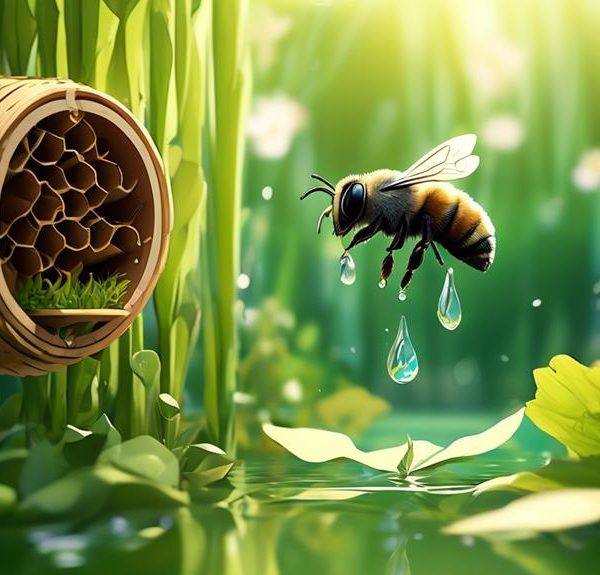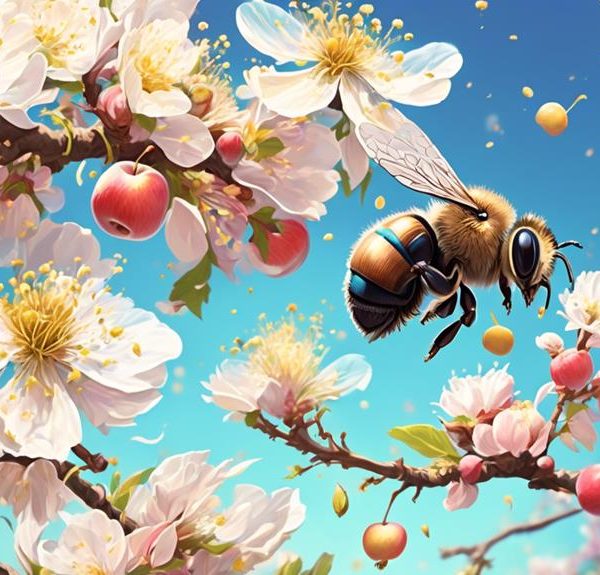Observe the fascinating nesting habits of Mason bees and discover if they really burrow into the ground for their homes.
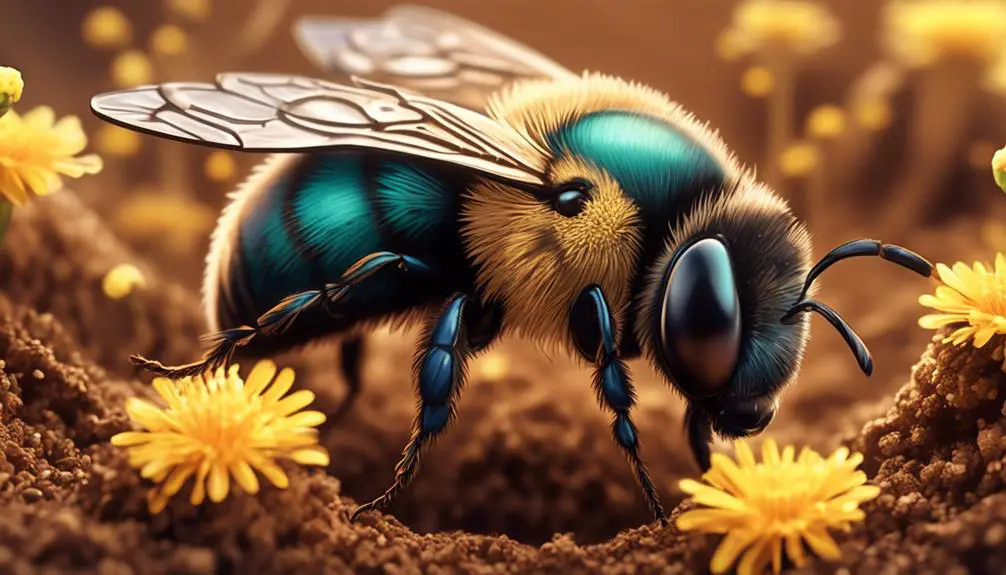
Do Mason Bees Nest in the Ground?
Isn't it fascinating how nature has a place for everything, even down to where each species of bee decides to nest? You might think, with their name, that Mason bees would choose the ground as their nesting place, much like their ground-dwelling counterparts.
After all, 'mason' brings to mind images of bricks, mortar, and, indeed, the earth. But do these industrious insects truly burrow into the ground to create their homes? Let's explore this intriguing question, and in doing so, unravel some of the captivating intricacies of our native bee species.
Key Takeaways
- Mason bees are solitary creatures that prefer nesting in small, narrow cavities such as hollow stems or holes in wood.
- They use mud or clay to create protective partitions between their eggs.
- Mason bees readily adopt human-made nesting tubes if placed correctly.
- They are efficient pollinators and have a higher pollination rate compared to honeybees.
Understanding Mason Bees
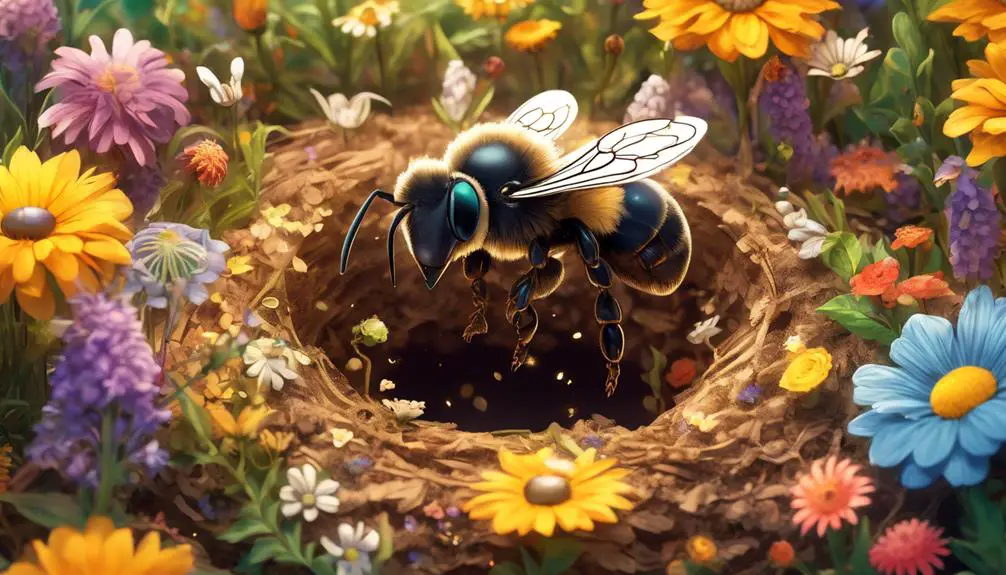
Before delving into the nesting habits of mason bees, it's crucial to understand their unique biology and behavior, which sets them apart from other bee species. Unlike honeybees or bumblebees, mason bees are solitary creatures. Each female is a queen in her own right, responsible for both reproducing and constructing her nest.
You'll find mason bees in various parts of the world, including North America, Europe, and Asia. They're small yet hardy, with a blackish-blue body that's about the size of a common housefly. What's fascinating is their industrious nature. They're named after masons or bricklayers, due to their unique nesting behavior. They use mud to build their nests, often in narrow crevices or tubes, and that's pretty resourceful of them!
Mason bees are also incredibly efficient pollinators. While honeybees might be more well-known, mason bees play a vital role in pollinating crops and gardens. For every 100 visits to flowers, a mason bee can pollinate nearly 95% of them, while a honeybee might only manage 5%. Now that's impressive!
Mason Bees Nesting Preferences
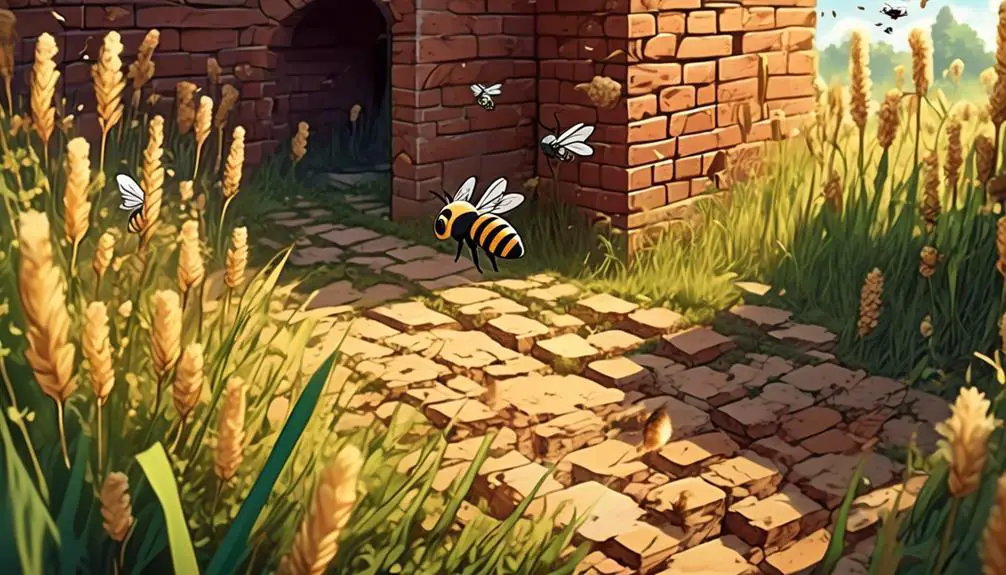
Now that you're familiar with the unique biology and behavior of mason bees, let's explore their nesting preferences, which are as distinctive and fascinating as the bees themselves. Unlike many bee species, mason bees are solitary creatures. They don't live in hives; instead, they prefer to nest in small, narrow cavities such as hollow stems or holes in wood.
Let's look at this in detail:
Preferred Nesting Material | Reason |
|---|---|
Hollow stems | Mason bees use their mandibles to shape these into perfect nesting sites. |
Holes in wood | These provide safe, sheltered spaces for mason bees to lay their eggs. |
Clay or mud | Mason bees use this to create protective partitions between their eggs. |
Human-made nesting tubes | Mason bees will readily adopt these if placed correctly. |
Comparing Mason and Ground Bees

To fully appreciate the distinctiveness of mason bees, it's helpful to compare them with their close relatives, the ground bees. Mason bees, unlike ground bees, are solitary creatures. They prefer to nest in small cavities, often in wood or hollow stems. They're called 'mason' bees because of their habit of using mud to seal off each cell in their nest after laying an egg.
On the other hand, ground bees are known for their subterranean nesting habits. They excavate nests in sandy or well-drained soils, creating intricate underground tunnels. These bees are also solitary but differ from mason bees in their nesting preferences and foraging habits.
Both mason and ground bees are non-aggressive and beneficial for pollination. However, mason bees are often more effective pollinators due to their hairy bodies which collect and distribute pollen more efficiently. Ground bees, with their burrowing lifestyle, contribute to soil aeration, enhancing the health of your garden.
Understanding these differences can help you identify and accommodate these beneficial insects in your yard. Remember, both contribute to the biodiversity and health of your garden. Embrace them, their habits, and the significant roles they play in our ecosystem.
Influences on Mason Bees Habitats
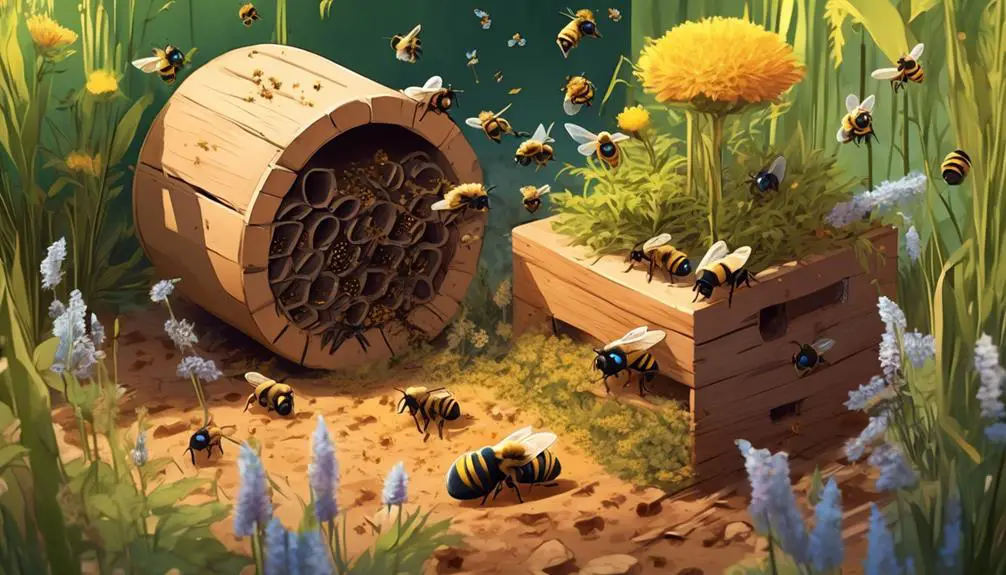
Understanding the factors that influence mason bees' habitats, you'll find a confluence of environmental conditions, availability of nesting materials, and food sources playing critical roles.
These pollinators, unlike honeybees, aren't social creatures. They don't build hives but instead prefer solitary nests, often in pre-existing holes or cavities in wood.
Environmental conditions, particularly temperature and humidity, significantly influence the mason bees' nesting habits. They favor moderate climates, with spring and early summer being their active periods. A sudden change in atmospheric conditions, such as a cold snap or heatwave, can disrupt their lifecycle.
The availability of suitable nesting materials also affects where these bees choose to nest. Mason bees use mud to seal their nests, hence their name. If there's a scarcity of mud, they'll likely seek out other environments to build their nests.
Lastly, the availability of food sources, predominantly flowers, is vitally crucial for mason bees. They rely on nectar and pollen for nourishment, so areas abundant in diverse flowering plants are highly attractive to them. If food sources are scarce, they may migrate to more fertile locations.
Therefore, understanding these factors can help in creating conducive habitats for mason bees.
Encouraging Healthy Mason Bee Populations
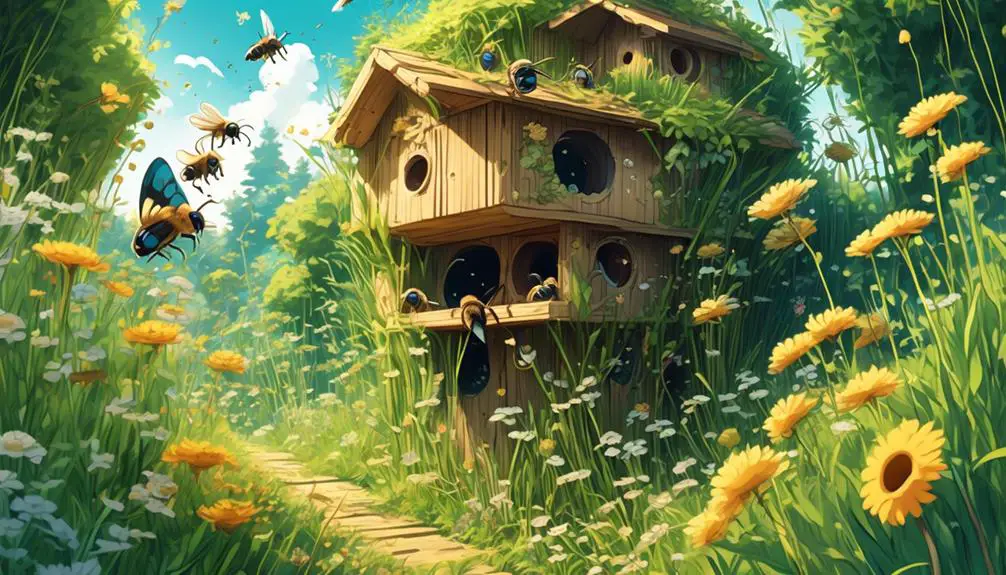
Promoting robust mason bee populations requires a thoughtful approach, including providing suitable nesting materials and ensuring an abundance of diverse flowering plants for nourishment. You can create a bee-friendly environment by introducing elements that cater to their specific needs. For instance, mason bees require holes for nesting, which can be provided by drilling holes into untreated wood or setting up a bee house.
Remember, mason bees are solitary creatures, so they don't need large hives like honeybees. They're also non-aggressive and unlikely to sting, making them perfect for backyard habitats. Also, while they don't produce honey, they're excellent pollinators and play a crucial role in maintaining biodiversity.
To ensure they've enough food, plant a variety of native flowering plants that bloom throughout the bee-active months. Also, avoid using pesticides, as they can harm these bees. Instead, opt for organic gardening practices to maintain a healthy bee population.
Conclusion
In summary, you've learned that mason bees don't nest in the ground, but prefer pre-existing holes in wood or hollow stems. You've seen how they differ from ground bees, and how habitat influences their behavior.
Remember, encouraging healthy mason bee populations is beneficial. They're excellent pollinators, so let's give them the support they need. Understand their nesting preferences and create a bee-friendly environment.
It's a win-win for both mason bees and us!

